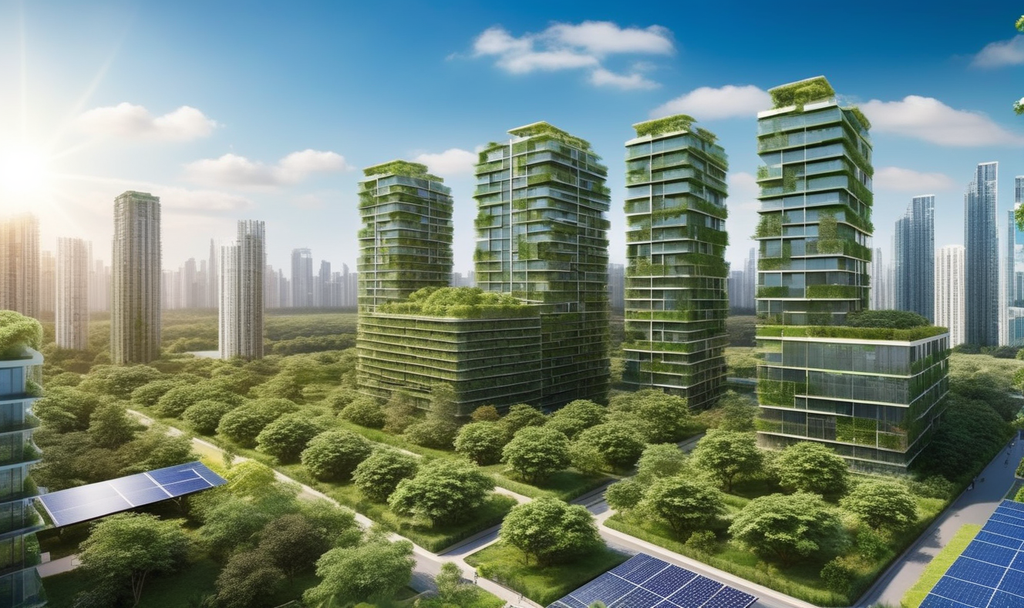As environmental awareness continues to grow, the field of architecture has undergone a significant transformation towards sustainability. The evolution of green architecture reflects a conscious effort to design and construct buildings that minimize their environmental impact while maximizing energy efficiency. This blog post explores the key trends in sustainable design, highlighting the innovative approaches that architects are adopting to create a greener and more eco-friendly built environment.
Understanding the Roots of Green Architecture
Before delving into the latest trends, it’s essential to trace the roots of green architecture. The concept emerged in response to the environmental challenges posed by conventional building practices. Early advocates sought to
integrate ecological principles into architectural design, aiming to create structures that harmonize with the natural environment rather than deplete its resources.
Incorporating Passive Design Strategies
One of the fundamental shifts in green architecture involves the widespread adoption of passive design strategies. Passive design relies on natural elements such as sunlight, wind, and landscaping to enhance a building’s energy efficiency. By strategically positioning windows to capture sunlight and implementing natural ventilation systems, architects can reduce the reliance on artificial lighting and air conditioning.
Harnessing the Power of Renewable Energy Sources
A significant milestone in the evolution of green architecture is the increased utilization of renewable energy sources. Solar panels, wind turbines, and geothermal systems are now common features in sustainable buildings, providing a clean and inexhaustible source of energy. This shift not only reduces the carbon footprint of structures but also contributes to the overall resilience of the built environment.
The Rise of Eco-Friendly Materials
As awareness of the environmental impact of construction materials has grown, architects are placing greater emphasis on using eco-friendly alternatives. Sustainable materials such as reclaimed wood, recycled metal, and bamboo are gaining popularity for their low ecological footprint. Additionally, innovations in material science have led to the development of high-performance yet environmentally friendly building components.
Integrating Smart Technologies for Energy Management
The evolution of green architecture is closely tied to advancements in smart technologies. Building automation systems, equipped with sensors and sophisticated algorithms, enable precise control over energy consumption. From adjusting lighting based on occupancy to optimizing heating and cooling systems, these technologies play a crucial role in creating energy-efficient and environmentally conscious buildings.
Promoting Biodiversity in Urban Spaces
Green architecture is not limited to the confines of buildings; it extends to the surrounding urban landscape. Architects are increasingly incorporating green roofs, vertical gardens, and urban farms to enhance biodiversity in densely populated areas. These green spaces not only provide aesthetic value but also contribute to improved air quality and the overall well-being of urban communities.
Addressing Water Conservation Through Innovative Design
Water scarcity is a pressing global issue, and green architecture is actively addressing this challenge through innovative design solutions. Rainwater harvesting systems, greywater recycling, and permeable surfaces that allow water to recharge the groundwater are becoming integral components of sustainable buildings. These measures not only reduce water consumption but also mitigate the impact of urban development on local ecosystems.
Balancing Aesthetics with Environmental Responsibility
An evolution in green architecture does not mean compromising on aesthetics. Modern architects are proving that sustainability and beauty can coexist. The use of innovative design techniques, such as biomimicry, allows buildings to mimic natural forms and functions, creating visually stunning structures that blend seamlessly with the environment. This fusion of aesthetics and environmental responsibility is redefining the perception of sustainable architecture.
If you have any question about this article, please contact us …
Challenges and Opportunities in the Future
While the evolution of green architecture has made significant strides, challenges persist. Economic considerations, regulatory frameworks, and public awareness are factors that influence the widespread adoption of sustainable design practices. However, these challenges also present opportunities for architects, planners, and policymakers to collaborate on creating a more sustainable and resilient future.
In conclusion, the evolution of green architecture signifies a paradigm shift in the way we approach building design and construction. From passive design strategies to the integration of smart technologies and the use of eco-friendly materials, architects are at the forefront of creating a built environment that aligns with the principles of sustainability. As the demand for environmentally conscious solutions continues to rise, the future of green architecture holds the promise of even more innovative and transformative developments.

